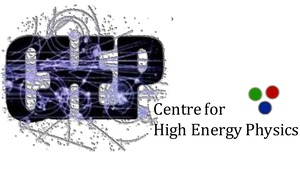Description
Speaker: Anurag Kaushal
Abstract: We study the semi-classical dynamics of a scalar field in the background of a black hole in an asymptotically AdS (AAdS) spacetime, in the framework of the Hamiltonian formulation of General Relativity. The small diffeomorphism (gauge) symmetries generated by the Hamiltonian and momentum constraints are completely fixed by the maximal slicing and spatial harmonic/Dirac gauge conditions after which the residual phase space degrees of freedom are gauge invariant. While many of our results are valid for AAdS$_{d+1}$ spacetimes, we mainly discuss the $d=2$ case of the static BTZ solution. We present the explicit solution for the smooth maximal slicing of the fully extended BTZ solution where the spatial slices cut across the horizons, asymptote to the usual Schwarzschild slices, do not include the past and future singularities, and for which the lapse remains non-zero at the bifurcate point. We also derive unique large diffeomorphisms that asymptote to time translations on both boundaries in the maximal slicing gauge.
We present the solution of the scalar field wave equation in this gauge in terms of its boundary values which correspond to boundary CFT operators by the AdS/CFT dictionary. We explicitly construct the finite, time-dependent Hamiltonian in terms of a discrete set of mode functions of the scalar field that are smooth and differentiable across the horizons of the fully extended BTZ black hole. These modes mix the boundary operators from the two sides and are appropriate linear combinations of the Hartle-Hawking-Unruh modes. This Hamiltonian is an operator in the product of the two CFTs associated to the two boundaries and describes the time evolution of CFT operators. Our results are valid for evolution times smaller than the scrambling time during which the fully extended BTZ solution continues to be a valid saddle point of the quantum gravity path integral.

